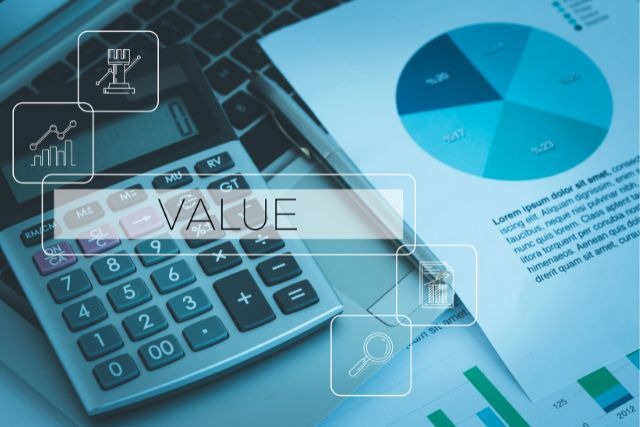
Business is all about understanding and improving the value that customers bring to your business. Customer value is an important process that helps companies to understand and optimize the value of their customers. In this blog, we’ll tell you all about customer value: what exactly it entails and what ways there are to determine it.
What is customer value?
Customer value is a process in which companies analyze and evaluate the value of their customers. It goes beyond just the financial contribution that customers make. This includes their loyalty, engagement, and potential for future interactions. To determine value, companies collect and examine data on customer behavior, interactions, and purchase history. This is the only way to gain clear insight into which customers are most valuable to your business goals and growth strategies. With these insights, you can then develop personalized approaches to increase customer satisfaction. But you also strengthen loyalty and ultimately maximize the total customer value.
Ways to perform customer value
There are several methods that companies can use for customer value. Each approach offers unique perspectives on the contribution of customers and helps to make strategic decisions. We have listed the most common ways of customer value.
Client’s financial value
A crucial starting point in customer value is to unravel the customer’s financial value. There are several variables that deepen our understanding, namely:
- Revenue: Analyzing the annual average revenue per customer provides us with valuable insights. This process takes on an extra dimension when we are dealing with products or services that periodically generate turnover. In doing so, we have to spread carefully to obtain a realistic picture. To calculate the specific value, the CLV is calculated. You can read all about it in this blog.
- Marketing costs: Now that you know the average revenue per customer, you can also calculate what you want to spend on a new customer relationship. You do this through the marketing costs. This spend is focused on customer satisfaction, from tangible corporate gifts to digital endeavors like email marketing and events. To paint a fair picture, these costs are divided among the customer base.
- Support and management costs: Customer retention involves more than just marketing. The servant hands of service and account management play a role here. The level of attention that each customer requires is linked to, for example, a portion of the salaries of service and account employees.
- Acquisition costs: The cost embodies the investment it takes to land a client, whether it’s through an advertisement or email campaign.

RFM-Analysis
The evaluation of customer value extends beyond the current turnover. It’s crucial to not only focus on the present but also reveal future customer value. This is because a loyal customer has more to offer than a customer who quickly leaves for the competition. This future value basically becomes the embodiment of customer loyalty in numbers. One methodology that comes in handy here is the RFM segmentation (recency, frequency, monetary value). With this approach, you categorize customers based on their buying behavior. In doing so, you’ll reveal valuable insights into their interactions with the company. Three important dimensions are examined:
Recency
First, we have recency – the time dimension of customer interactions. A customer who has recently made a purchase is often considered more valuable, as their engagement is current. This helps businesses identify customers who come back regularly.
Frequency
Then we have frequency – the frequency of purchases. Customers who make repeated purchases contribute to a steady stream of revenue. The analysis differentiates the frequent buyers from the occasional shoppers and this insight impacts marketing strategies and customer retention efforts.
Monetary value
Finally, there is monetary value – the monetary value of purchases. Customers who make large purchases contribute substantially to turnover. Analyzing monetary value helps businesses segment customers in terms of their financial contribution.
By combining these three dimensions, a complete picture of customer value is created. Customers are categorized into segments, such as “best customers” who have recently purchased, buy frequently, and spend a lot. This knowledge goes beyond statistics. It reveals the key to predicting customer lifetime value, future value, and churn.
Subjective customer value
In the search for customer valuation, we often end up with hard figures and measurable data. Yet in the shadows of these figures lie even more treasures – the subjective customer value. These values, which are sometimes difficult to capture in numerical terms, play a crucial role in building strong customer relationships and fostering brand loyalty.
- Customer satisfaction is often a measuring point for companies, with the Net Promoter Score (NPS) as a well-known example. But to really dive into the customer’s mind, it’s crucial to figure out why customers would recommend you. Is it about the perception of the brand or the emotional connection? Or is it the personal contact with the company that leaves a lasting impression?
- Customer experience, another costly subjective dimension, cannot be captured with numbers alone. Qualitative and quantitative surveys with customers provide insight into how they feel about the service they receive. This is not only about the functional aspects, but also about the feeling of added value and attention.
Challenges of customer value
While customer value can be invaluable, there are some challenges to consider for a successful implementation.
- One-sided focus on financial aspects: it is tempting to measure customer value solely in terms of financial returns. However, this can lead to ignoring other important aspects, such as customer satisfaction and long-term relationships.
- Lack of qualitative data: The success of customer valuation depends on accurate and reliable customer data. Flawed or incomplete data can lead to misinterpretations and decision-making.
- Not taking into account changing needs: Customer needs and behaviors can change over time. It’s important to conduct regularly updated analytics to keep up with these changes.
- Lack of actionable insights: Collecting data is not enough. It is also crucial to convert insights into concrete actions and strategies that actually improve customer value.
- Ethics and privacy issues: When collecting and analyzing customer data, companies must respect ethical standards and privacy laws so as not to damage customer trust.
Customer value is therefore about understanding figures and feelings, seeing short- and long-term value and finding harmony between technical analyses and human connections. Ultimately, it’s not just a goal, but a constant companion on our journey to sustainable success.





